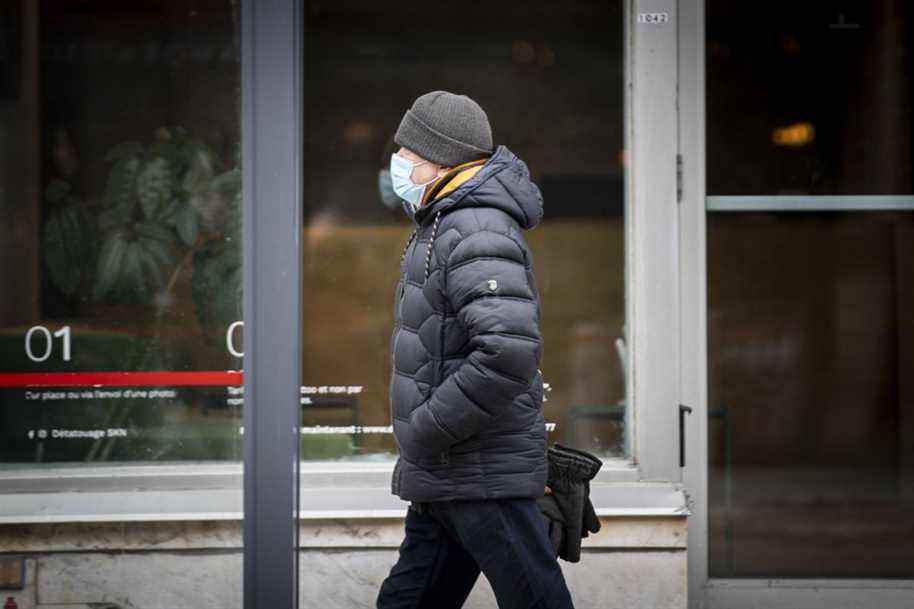A sign that the sixth wave is indeed present, nearly one in five people in Quebec believe that they will develop symptoms associated with COVID-19 in the next week, according to new data. A higher number than in January.
Posted at 5:00 a.m.
The Press obtained on Wednesday the most recent data compiled by the Center interuniversitaire de recherche en analyze des organizations (CIRANO) on COVID-19. Since January, CIRANO researchers have wanted to overcome the weak data on the number of cases in Quebec, weakened by limited access to PCR tests, by measuring the incidence of COVID-19 in the province. Researchers Roxane Borgès Da Silva, David Boisclair, Vincent Boucher, Nathalie de Marcellis-Warin, Pierre-Carl Michaud and Ingrid Peignier survey a representative sample of 3,000 Quebec adults every week. Respondents are asked if they have had COVID-19 in the past seven days. Respondents may have tested positive on a rapid or PCR test, or it may be a self-diagnosis based on symptoms.

During the past week, 23,500 to 43,500 people a day have reported a positive diagnosis for COVID-19. You have to go back to the week of January 20, 2022 to see such a high number. While 3.8% of respondents said they had been in isolation due to COVID-19 in the week of March 24 to 29, this proportion rose to 5.7% in the last week.
From 224,000 to 305,000
Number of people who contracted COVID-19 during the seven-day period between March 31 and April 5, 2022, according to the CIRANO estimation method
Source: Interuniversity Research Center for the Analysis of Organizations
In one week, the incidence of cases estimated by CIRANO increased by 30% to 40%. “If we have the same increase next week, we could well exceed the peak of the fifth wave”, notes Mme Borgès Da Silva, who believes that this situation could lead to load shedding in hospitals. “We have a fragile healthcare system. If absenteeism increases a lot with the increase in cases, we could put certain establishments, in certain regions, in a more vulnerable situation, ”she says.
Mme Da Silva notes that since January, the number of cases recorded daily has never fallen as low as last fall, when days with 2,000 new cases or less could be experienced. “The lowest we have known since January is 13,400 cases per day in the week of March 10 to 15,” she notes.
Significant increase in western Quebec
The most marked increases in the number of cases are recorded this week in the Outaouais, Capitale-Nationale, Estrie and Mauricie–Centre-du-Québec regions. In Outaouais, the proportion of the population affected by the virus has increased from 2% to more than 5% in one week. The eastern regions of Quebec, particularly hard hit last week, seem to be heading towards a plateau. “However, it will take another week to confirm this stabilization,” said Ms.me DaSilva.

All age groups show an increase in the proportion of respondents saying they have had COVID-19. But the increase is particularly marked among young people aged 18-29, where the proportion of infected individuals rose from 4.66% to 7.81% in one week. Among 50-59 year olds, this proportion rose from 2.37% to 4.32%, and among 30-39 year olds, from 4.50% to 6.74%.
Daily report
The daily government report on Wednesday reported 28 additional deaths, as well as an increase of 42 hospitalizations. The 28 deaths reported Thursday bring the daily average calculated over seven days to 17. The trend is up 52% for a week.
Quebec also reported 42 new hospitalizations. The 1,582 people currently hospitalized represent a 28% increase over one week. On the other hand, the situation is less tense in intensive care, which recorded a drop of 3% over one week.
The 3,777 new cases reported on Thursday bring the daily average to 3,044. The trend is thus up 29% over one week. These numbers likely reflect only a portion of total infections, due to limited access to PCR testing. In addition to the cases detected through PCR tests, 2,580 people have reported in recent days having tested positive on a rapid test.


